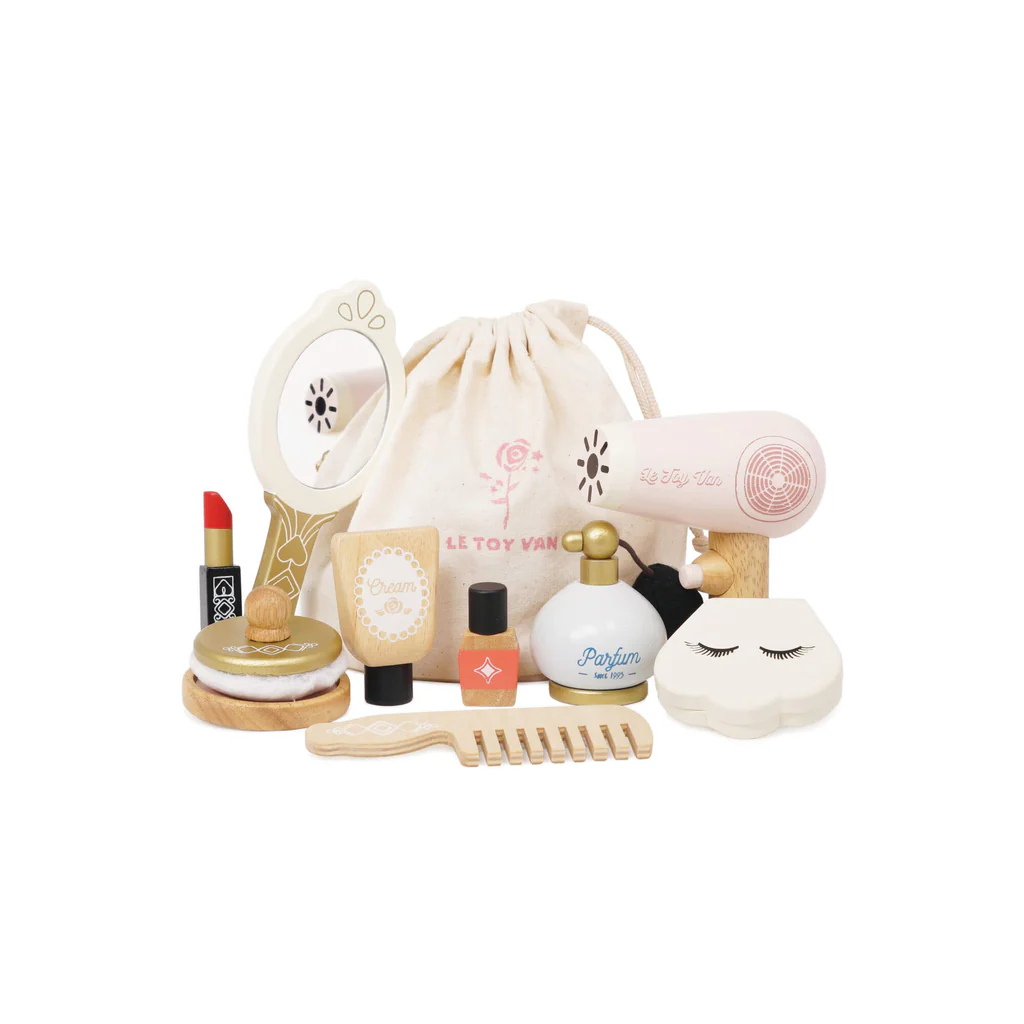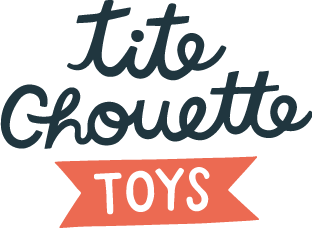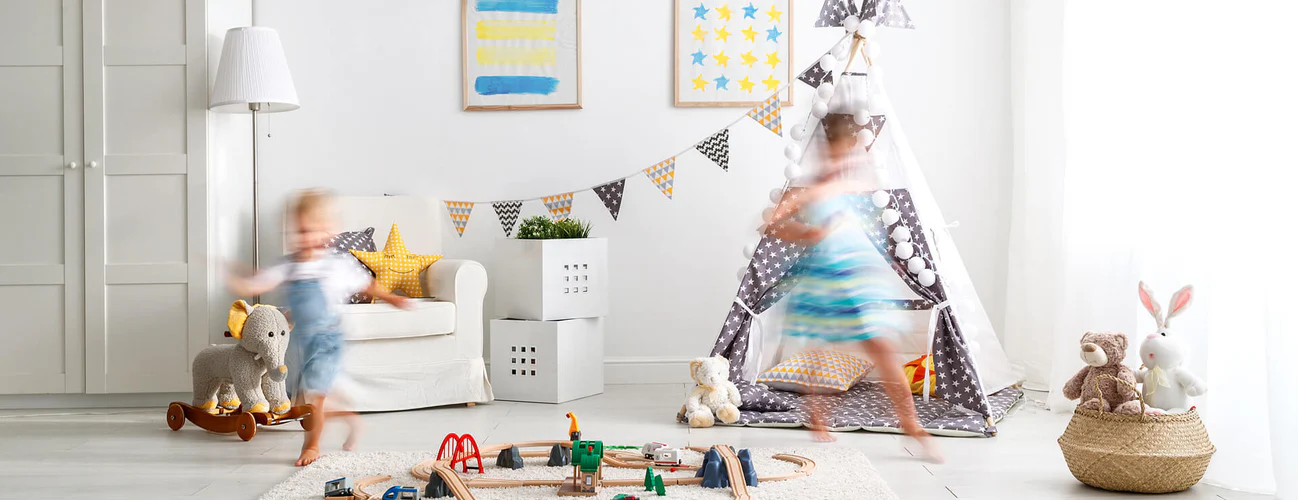There’s something unique, comforting and enchanting about wooden toys. They are simple yet versatile, and are extremely beneficial to children’s cognitive, social and physical development. The developmental benefits of wooden toys are real.
Nous verrons dans cet article
Sustainable toys
Wooden toys are still seen as traditional play tools that can be passed down from generation to generation. Their classic appeal and basic learning attributes make them timeless and appealing to children of all ages and eras.
What’s more, they’re more durable, which means they’re more likely to be outgrown by siblings, children and even grandchildren.
Triggering the imagination
As professionals of the imagination, children are capable of stacking blocks to form houses, designing entire cities, creating complex stories and setting off on adventures. Wooden toys, with their simple yet versatile design, offer plenty of space for little imaginations. In this way, they foster children’s creativity and know-how, while boosting their self-confidence.

Example of an imitation toy by Le Toy Van
Sensory development
What a pleasure it is to handle a wooden toy. Feeling the weight, the feel of the material, the rounded or angular shapes, wooden toys develop complex neurological connections in the child’s brain and improve memory.
By exploring the world through touch, children become adept at recognizing the main elements and attributes of the world: hot or cold, sticky or rough, wet or dry, soft or rigid. Wood can heat up and reach warmth, and has a slight natural odor. This is particularly beneficial for young children, who discover and explore the world not only by touch and sight, but also by smell and by putting things in their mouths.
Reduced anxiety
A wooden toy is very soothing, and appeals not only to the child’s sense of touch. Research shows that children are calmer with wooden toys than with any other material.
Exploring and playing with toys made from natural materials allows children to slow down and probe the qualities and possibilities of play. Plastic toys, with their bright, glossy colors, can overstimulate, stress and exhaust a child, in contrast to the minimalist, wholesome, non-intrusive nature of wooden toys. The result is a calmer child, immersed in imaginative, quality play.
Language development
Sensory play allows children to try out and learn new ways of talking about the world. It promotes language development and encourages them to communicate effectively with others during play. Coupled with the specific features of wooden toys, which enable versatility and stimulate the imagination, children are stimulated to express the new emotions they feel.
Fine motor skills
Wooden toys are essential for the development of fine motor skills, i.e. the coordination and synchronization of hands and fingers with the eyes. Pinching, lifting and balancing wooden toy pieces gets the nervous system working, and develops the parts of the brain responsible for dexterity and coordination.
In short, playing with wooden blocks prepares the child for more complex tasks later on, such as holding a pencil and tracing and other complex coordinated movements.
Read on:
Discover how to use puzzles with children
Cognitive growth
We’ve already established that sensory play creates interconnections in the nervous system and brain pathways, developing the child’s ability to perform complex learning tasks. Wooden toys promote children’s cognitive development, enhancing their thinking processes, reasoning and logic.
By grasping and lifting, stacking, merging and sorting wooden blocks and toys, children learn to draw logical conclusions and understand the physical attributes and rules of weight, dynamics, geometry and volume.
Safety
Non-organic toys such as plastic and metal are known to contain toxic substances such as BPA, PVC and, in the case of older toys, lead paint. Exploring the senses in young children involves putting toys in their mouths.
The advantage of wooden toys is that they are organic, non-toxic and naturally antibacterial. Unlike plastic toys, which, when broken, can leave sharp, jagged edges and swallowable bits. What’s more, wooden toys are more durable and recyclable.
Ecological and environmentally friendly
Today’s parents are concerned about the environment. They are concerned not only about the non-organic toxic substances contained in toys and everyday items, but also about their harmful effects on the environment.
Landfills and oceans are clogged with non-biodegradable plastics that are harmful to living organisms, adding to already pressing environmental problems. Wood, on the other hand, is a sustainable, recyclable and biodegradable material.
What’s more, a recent study shows that an average of three months after Christmas, 41% of all plastic toys end up in landfill. Imagine the effect all that plastic has on the environment. Wooden toys, if they ever end up in a landfill, won’t cause much damage and, over time, will decompose without leaving harmful traces on the land or in the ocean.
Educational qualities
Wooden toys are manufactured in accordance with research and methodologies relating to learning and child development, based on the principles developed by legendary child psychologists, scientists and pedagogues such as Montessori, Steiner and Dewey.
Wooden toys are designed to help children from an early age to learn about shapes, sizes, colors and textures, as well as to develop logical thinking, cause-and-effect relationships, organizational, problem-solving and decision-making skills, among others.
They make excellent toys to give as birth or birthday gifts.
Want to learn how to clean your wooden toys?

